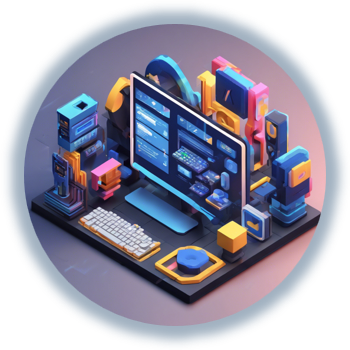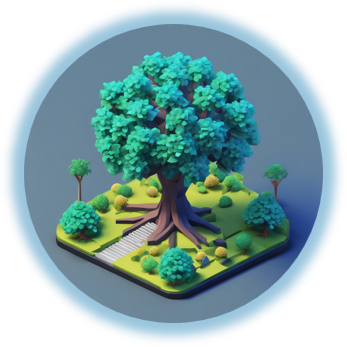Learn by doing. These are all offered 3D tutorials, I hope this helps you!
3D Data Processing Tutorials
I write 3D Tutorials to help you develop 3D Data Processing Skills. These guides are all Open-Access and take on various shapes (articles, code, notebooks, videos, datasets).
Explore Open-Access Knowledge
Browse the library of open-access tutorials I authored.
You can follow the latest release, my special picks of video tutorials.
Get notified when there is a new release 🔔
🗺️ Feel free to email me directly through my 3D newsletter if you have any recommendations, questions or want to join the sharing force. 🫶.
Explore 3D Expert Resources
Hands-on Tutorials: Editor's Pick 🍇
The following articles are deep-dive guides curated and published in Towards Data Science (Medium). They contain visuals, code, and a step-by-step workflow.

📘Published in Towards Data Science (TDS) ✨ 38 min read.
3D Geospatial Data Integration: The Ultimate Guide
The Ultimate Guide to unlocking a streamlined workflow for 3D City Modelling Applications. The tutorial covers Python Automation combining 3D Point Clouds, Meshes, and Voxels for advanced analysis.

📘Published in Towards Data Science (TDS) ✨ 27 min read.
Segment Anything 3D for Point Clouds: Complete Guide
How to build a semantic segmentation application for 3D point clouds leveraging SAM and Python. Bonus: code for projections and relationships between 3D points and 2D pixels.

📘Published in 3D Geodata Academy ✨ 19 min read.
3D Deep Learning Essentials: Roadmaps and Systems
I want to give you a clear roadmap that best fits your goals to develop 3D Deep Learning Systems along three tracks: The Hobbyist, the Engineer, and the Researcher / Innovator. Let me demystify and provide something as close to a recipe as possible to unlock hands-on 3D Deep Learning Skills and become an “elite” 3D Innovator.

📘Published in Towards Data Science (TDS) ✨ 20 min read.
The Blender Handbook for 3D Point Cloud Visualization and Rendering
Complete guide to create 3D experiences with large point clouds in Blender. In this tutorial, I want to fill a large internet gap: how to leverage one of the best 3D tools for manipulating and visualizing massive point cloud datasets.

📘Published in 3D Geodata Academy ✨ 39 min read.
3D Point Cloud Shape Detection for Indoor Modelling
A 10-step Python Guide to Automate 3D Shape Detection, Segmentation, Clustering, and Voxelization for Space Occupancy 3D Modeling of Indoor Point Cloud Datasets.
3D Tutorials: Latest Release
I write tutorials and guides every month to help you develop new solutions. I target topics such as 3D reconstruction, 3D Processing, Spatial AI, Point Clouds, 3D Object Recognition, and more.
3D Tutorials (x15 latests)
3D Data Processing: Video Tutorials Serie
Below you can find several video tutorials that are shared openly.
Feel free to explore the Youtube Channel for new releases every months.



